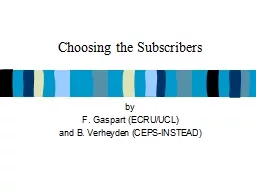PDF-Your Guide to Choosing a
Author : ariel | Published Date : 2022-08-31
MEDIGAP POLICY Medigap is private health insurance designed to help pay healthcare costs that aren146t covered by Medicare Each Medigap plan covers di31erent costs
Presentation Embed Code
Download Presentation
Download Presentation The PPT/PDF document "Your Guide to Choosing a" is the property of its rightful owner. Permission is granted to download and print the materials on this website for personal, non-commercial use only, and to display it on your personal computer provided you do not modify the materials and that you retain all copyright notices contained in the materials. By downloading content from our website, you accept the terms of this agreement.
Your Guide to Choosing a: Transcript
Download Rules Of Document
"Your Guide to Choosing a"The content belongs to its owner. You may download and print it for personal use, without modification, and keep all copyright notices. By downloading, you agree to these terms.
Related Documents












![[PDF READ ONLINE] The ABA Complete and Easy Guide to Health Care Law: Your Guide to Protecting](https://thumbs.docslides.com/1020304/pdf-read-online-the-aba-complete-and-easy-guide-to-health-care-law-your-guide-to-protecting.jpg)

